Scientists have recently released a mathematical breakdown of the perfect handshake. The University of Manchester researchers discovered that nearly one-in-five people hate the handshake, listing complaints such as sweaty palms, limp wrists, gripping too hard and no eye contact.
Professor Geoffrey Beattie says:
"The human handshake is one of the most crucial elements of impression formation and is used as a source of information for making a judgment about another person.
A handshake reveals aspects of the personality of the person giving it - for example, a soft handshake can indicate insecurity, whilst a quick-to-let-go handshake can suggest arrogance."
If you want to avoid being a limp-wristed ninny (or worst yet, exercise an obnoxious grip-of-steel), here's some HowTo tips:
- Use the right hand.
- Use a complete grip and a firm squeeze (but not too strong!)
- Make sure your palm is cool and dry.
- Use approximately three shakes, with a medium level of vigor.
- Hold for no longer than 2-3 seconds.
- Use eye contact and smile naturally!
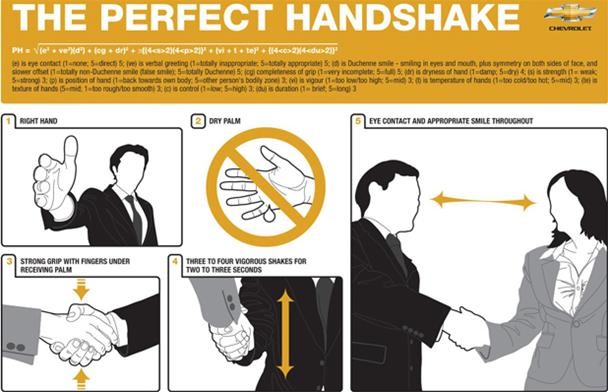
P.S. For the mathematically inclined, here's the formula:
"PH = v (e2 + ve2)(d2) + (cg + dr)2 + p{(4<s>2)(4<p>2)}2 + (vi + t + te)2 + {(4<c>2 )(4<du>2)}2"
(e) is eye contact (1=none; 5=direct) 5; (ve) is verbal greeting (1=totally inappropriate; 5=totally appropriate) 5; (d) is Duchenne smile - smiling in eyes and mouth, plus symmetry on both sides of face, and slower offset (1=totally non-Duchenne smile (false smile); 5=totally Duchenne) 5; (cg) completeness of grip (1=very incomplete; 5=full) 5; (dr) is dryness of hand (1=damp; 5=dry) 4; (s) is strength (1= weak; 5=strong) 3; (p) is position of hand (1=back towards own body; 5=other person's bodily zone) 3; (vi) is vigour (1=too low/too high; 5=mid) 3; (t) is temperature of hands (1=too cold/too hot; 5=mid) 3; (te) is texture of hands (5=mid; 1=too rough/too smooth) 3; (c) is control (1=low; 5=high) 3; (du) is duration (1= brief; 5=long) 3.
Just updated your iPhone? You'll find new emoji, enhanced security, podcast transcripts, Apple Cash virtual numbers, and other useful features. There are even new additions hidden within Safari. Find out what's new and changed on your iPhone with the iOS 17.4 update.





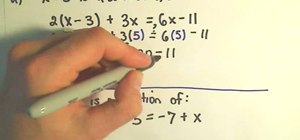


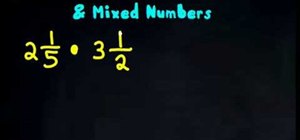

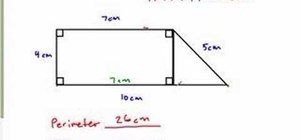



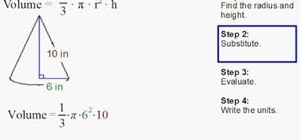

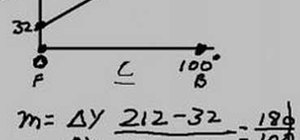

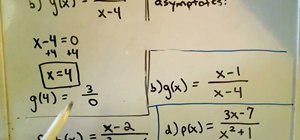





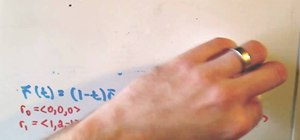

1 Comment
Math applied to handshakes, awesomeness!!!!
Share Your Thoughts